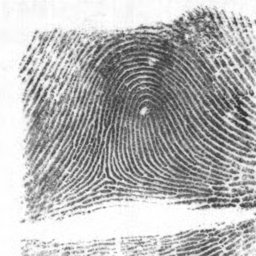
finger.png
This code loosely follows the approach presented by
Hong, L., Wan, Y., and Jain, A. K. 'Fingerprint image enhancement:
Algorithm and performance evaluation'. IEEE Transactions on Pattern
Analysis and Machine Intelligence 20, 8 (1998), pp 777-789.
Ridge regions in the image are identified and normalised, ridge orientations are determined, local ridge frequencies calculated, and then contextual filters with the appropriate orientation and frequency are applied.

finger.png
im = imread('finger.png');
% Identify ridge-like regions and normalise image
blksze = 16; thresh = 0.1;
[normim, mask] = ridgesegment(im, blksze, thresh);
show(normim,1);
% Determine ridge orientations
[orientim, reliability] = ridgeorient(normim, 1, 5, 5);
plotridgeorient(orientim, 20, im, 2)
show(reliability,6)
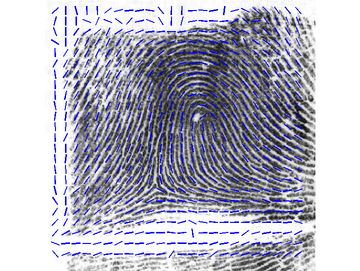 Orientations overlaid | 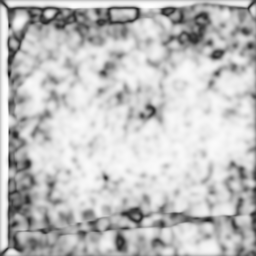 'Reliability' of orientations |
% Determine ridge frequency values across the image
blksze = 36;
[freq, medfreq] = ridgefreq(normim, mask, orientim, blksze, 5, 5, 15);
show(freq,3)
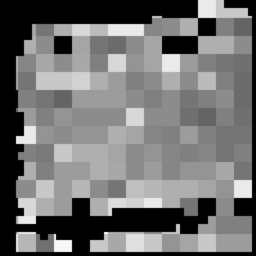
Frequency data
% Actually I find the median frequency value used across the whole
% fingerprint gives a more satisfactory result...
freq = medfreq.*mask;
% Now apply filters to enhance the ridge pattern
newim = ridgefilter(normim, orientim, freq, 0.5, 0.5, 1);
show(newim,4);
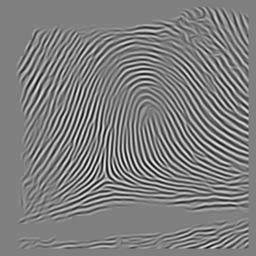
Filtered image
% Binarise, ridge/valley threshold is 0
binim = newim > 0;
show(binim,5);

Binary image
% Display binary image for where the mask values are one and where
% the orientation reliability is greater than 0.5
show(binim.*mask.*(reliability>0.5), 7)
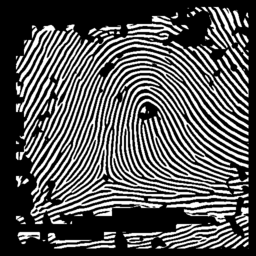 Masked binary image |  Original image |
It would probably be sensible to apply a morphological closing to the (reliability > 0.5) masking image so that small 'holes' in the reliability data (which often occur at minutiae points) are removed.
Download this code example
I leave it to you to thin the binary image and then try to pick out the valid minutiae...